Over the years Intel has released a number of variations on their CPU’s and started some lines that have since faded out (does anyone remember the Core 2, Pentium Pro or DX Math coprocessor). So there is no mystery why many people find Intel’s current 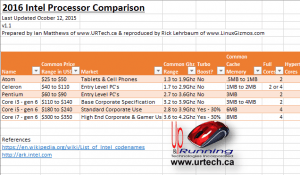 lines mysterious. They just don’t know if an Atom is more powerful than an i7. This page provides a simple explanation of the differences between Intel’s 2015 and 2016 processor products. To the right is a simplified chart explaining the primary technical differences between current Intel CPU’s and below are very brief descriptions explaining each products history and application.
lines mysterious. They just don’t know if an Atom is more powerful than an i7. This page provides a simple explanation of the differences between Intel’s 2015 and 2016 processor products. To the right is a simplified chart explaining the primary technical differences between current Intel CPU’s and below are very brief descriptions explaining each products history and application.
Intel Atom:
In 2014 Intel decided that there grain of rice sized processor intended for embedded hardware (cell phones, TV’s, monitoring equipment, …) had been misused by industry in very low spec tablets and so the name needed to be changed to help consumers appreciate that the new Atom CPU’s were different from their old Atoms. High powered Atom processors are now mostly branded as Celerons. Intel’s 2016
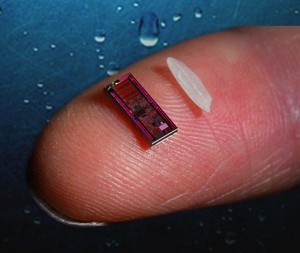
roadmap shows new Atom CPU’s with wireless networking LTE built in are coming and that leads us to think Atom will continue to drive into the mobile phone and phablet markets.
.
Intel Celeron:
Historically Celeron was Intel’s low performance CPU based on two year old mainstream CPU’s, but in 2015 Celeron is really the new name Atom’s. Intel keeps refining the Atom processor, making it smaller and more powerful while at the same time continuing to make it smaller and producing less heat. These CPU’s are now called Celeron. You can easily tell if the CPU you are looking at is really a Atom simply by looking at the power consumption. If the CPU used less than 15 watts of power, it’s really an Atom. That is a good thing because these Celeron/Atom processors are very powerful; often more powerful than Core i3 CPU’s. Current generation Celerons do not use fans to cool them, which is a big deal for noise and battery life.
.
Intel Pentium:
Intel now uses the Pentium brand to keep producing their old technology. They already paid for the technology design and the factories (what they call a ‘Fab’), so why not keep fabricating the old units. They often make minor (but annoying) modifications to their former Core series processors (like eliminating Hyperthreading or Turbo Boost), to help consumers clearly differentiate their new Core i3’s and i5’s from the Pentium line. On a bright note, they also adjust the price to match this drop in functionality so I suppose it is a fair trade.
.
Intel Core i3 – Generation 6:
These are the new Intel standard CPU’s released on 2015 that
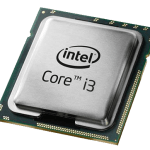
will live on through 2016. The Core i3, as usual, is their entry level unit with lower performance than i5’s and i7’s because i3’s don’t have TurboBoost or HyperThreading, and they have only 2 cores as opposed to 4 on the i5 or i7. If you spend a few minutes comparing CPU benchmarks, you will find the new Celerons (really just 2015 Atoms) produce about the same performance with a much lower cost and, importantly, much less electricity usage (which is great for battery life and reducing heat).
.
Intel Core i5 – Generation 6:
The Core i5 series is a nice bump on the i3’s. In many ways the i5 is Intel’s standard CPU. It runs very fast and has all features except Hyperthreading which is not critical when you have 4 real CPU’s pulling for you. The i5 is only about $40 more than an equivalent i3 and really worth that difference.
.
Intel Core i7 – Generation 6:
The i7 is the benchmark CPU. With 4 ‘real’ cores plus 4 Hyper Threads, all run
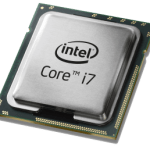
ning at the fastest speed in the industry, this is the top performer. If you buy an Intel i7 CPU that has it’s model name including ends with a “K”, you can overclock it… a lot! . These i7 CPU’s are really only of value to gamers and compute intensive (i.e. scientific work like processing seismic data). For most intensive home or business applications the i7 is simply overkill.
.
So which is the right CPU for you?
That is really dependent upon your requirements but for most people the latest batch of Celerons have the power to drive any co
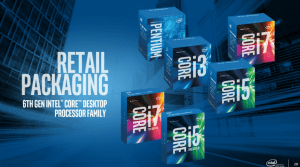
mmon application and the i5 can be used by those with serious performance needs. All of the other CPU’s should generally be relegated to special use cases. In particular, I would not personally consider an Atom, Pentium or i3 unless it was at an extreme discount. Even though there is nothing wrong with those products they are outclassed by the less expensive, cooler, smaller, Celeron.
.
Which Intel CPU is right for Your Company?
For my corporate clients I sell over 95% of their PC’s with i5’s. The i5 is still inexpensive and will anything most companies ask of it, including running three 4K screens. The reason I sell mostly i5’s is because the usage model on PC’s changes. Today they may need machines for boardrooms, but those PC’s may be repurposed in 16 months for some project. I need to provide a versatile option that sells in the $800 range and the i5 fits those requirements.
.
It should be noted that I had intended to develop this analysis for quite some time, but Rick Lehrbaum of
www.linuxGizmos.com inquiry about co-authoring this is what got me to prioritize this. Thanks Rick!
 lines mysterious. They just don’t know if an Atom is more powerful than an i7. This page provides a simple explanation of the differences between Intel’s 2015 and 2016 processor products. To the right is a simplified chart explaining the primary technical differences between current Intel CPU’s and below are very brief descriptions explaining each products history and application.
lines mysterious. They just don’t know if an Atom is more powerful than an i7. This page provides a simple explanation of the differences between Intel’s 2015 and 2016 processor products. To the right is a simplified chart explaining the primary technical differences between current Intel CPU’s and below are very brief descriptions explaining each products history and application. roadmap shows new Atom CPU’s with wireless networking LTE built in are coming and that leads us to think Atom will continue to drive into the mobile phone and phablet markets.
roadmap shows new Atom CPU’s with wireless networking LTE built in are coming and that leads us to think Atom will continue to drive into the mobile phone and phablet markets. will live on through 2016. The Core i3, as usual, is their entry level unit with lower performance than i5’s and i7’s because i3’s don’t have TurboBoost or HyperThreading, and they have only 2 cores as opposed to 4 on the i5 or i7. If you spend a few minutes comparing CPU benchmarks, you will find the new Celerons (really just 2015 Atoms) produce about the same performance with a much lower cost and, importantly, much less electricity usage (which is great for battery life and reducing heat).
will live on through 2016. The Core i3, as usual, is their entry level unit with lower performance than i5’s and i7’s because i3’s don’t have TurboBoost or HyperThreading, and they have only 2 cores as opposed to 4 on the i5 or i7. If you spend a few minutes comparing CPU benchmarks, you will find the new Celerons (really just 2015 Atoms) produce about the same performance with a much lower cost and, importantly, much less electricity usage (which is great for battery life and reducing heat). ning at the fastest speed in the industry, this is the top performer. If you buy an Intel i7 CPU that has it’s model name including ends with a “K”, you can overclock it… a lot! . These i7 CPU’s are really only of value to gamers and compute intensive (i.e. scientific work like processing seismic data). For most intensive home or business applications the i7 is simply overkill.
ning at the fastest speed in the industry, this is the top performer. If you buy an Intel i7 CPU that has it’s model name including ends with a “K”, you can overclock it… a lot! . These i7 CPU’s are really only of value to gamers and compute intensive (i.e. scientific work like processing seismic data). For most intensive home or business applications the i7 is simply overkill. mmon application and the i5 can be used by those with serious performance needs. All of the other CPU’s should generally be relegated to special use cases. In particular, I would not personally consider an Atom, Pentium or i3 unless it was at an extreme discount. Even though there is nothing wrong with those products they are outclassed by the less expensive, cooler, smaller, Celeron.
mmon application and the i5 can be used by those with serious performance needs. All of the other CPU’s should generally be relegated to special use cases. In particular, I would not personally consider an Atom, Pentium or i3 unless it was at an extreme discount. Even though there is nothing wrong with those products they are outclassed by the less expensive, cooler, smaller, Celeron.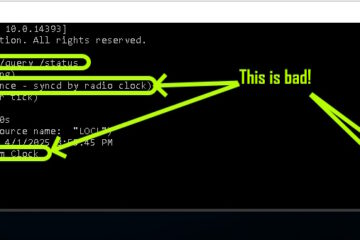
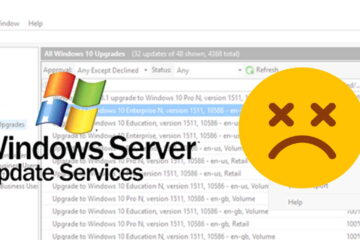
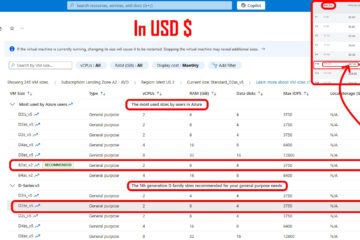
16 Comments
guideadda · September 10, 2019 at 11:42 pm
That is great question. Core M has been a bit of a football for Intel. M used to just mean MOBILE which meant low power versions of desktop CPU’s with low quality video performance. The big hardware differentiator is CPU fan; The mobile Core I servies require CPU fan but the Core M’s do not.
http://www.guideadda.com
Jason · November 24, 2017 at 10:57 pm
Which one (out of the below 2, e.g.) would you recommend for high school usage?:
Intel® Celeron® Processor N3450 (2M Cache, 1.1GHz, up to 2.2 GHz) or Intel Atom x5-Z8300
Jason · November 24, 2017 at 11:00 pm
Or… Intel Atom x5-Z8350 instead of Z8300?
Ian Matthews · November 29, 2017 at 8:25 pm
Hi Jason;
I would use CPUBoss.com to figure that one out: http://cpuboss.com/cpus/Intel-N3450-vs-Intel-Atom-x5-x5-Z8300 and the clear winner is the N3450 🙂
samrat thakur · August 6, 2017 at 12:00 pm
Is there any way by which we can overclock i5 processors.
By the way thanku for such usefully information.
Ian Matthews · August 17, 2017 at 10:48 pm
Certainly. i5’s can be overclocked but you will need a motherboard that supports setting frequency and voltage to do it right. There are many articles online including:
https://www.overclockers.com/3-step-guide-overclock-core-i3-i5-i7/
and http://www.masterslair.com/how-to-overclock-intel-core-i7-i5-i3-cpu-overclocking-guide
Remember that CPU’s with a K at the end of their name are designed to be overclocked like the i5-655K
Michael Timpson · February 17, 2017 at 8:53 am
You left off Xeon. How does that compare?
Ian Matthews · March 20, 2017 at 8:24 pm
XEON is Intels Server CPU brand which is really just repackaged i5’s and i7’s that allow multiple CPU’s. Where desktop i5 and i7’s allow a single CPU, XEON CPU’s can typically have up to 4 CPU’s (which could mean 4 x a large number of cores). I hope that helps
hairil · November 15, 2016 at 10:46 pm
Hi , thank you for your good writing,
Btw I encounter 1 incorrect information here,
Core-i3 does have hyperthreading but no TurboBoost.
It is a 2 core 4 thread CPU.
Hannah · July 8, 2016 at 1:51 pm
Thank You Thank You Thank You for getting to and stating the SIMPLE dang POINT!!!! now that wasn’t so hard ……for all you computer/tech sites umphh wired ahumm cnet ummm ect ect!!!!
Frankie · February 26, 2016 at 9:56 am
Thanks for the info.
Where does Core M fit in to this picture?
Also, how do we compare the accompanying integrated graphics options?
Ian Matthews · May 29, 2016 at 11:06 am
Hi Frankie;
That is great question. Core M has been a bit of a football for Intel. M used to just mean MOBILE which meant low power versions of desktop CPU’s with low quality video performance. The big hardware differentiator is CPU fan; The mobile Core I servies require CPU fan but the Core M’s do not.
The New Intel Core M’s are Skylake and Broadwell codenamed and run very nicely indeed. They are still less powerful than their Core I series brethren but because they do not use near as much electricity or produce neat as much heat and do not need a noisy energy sucking fan, devices based on the NEW Core M’s have insane batter life. For instance the new Apple MacBook weighs less than a kilo but has 10 hour battery.
If you want more details http://www.trustedreviews.com/opinions/intel-core-m-everything-you-need-to-know provides an excellent review.
microsoft · October 23, 2015 at 4:12 am
Excellent goods from you, man. I’ve be aware your stuff previous to and you are simply too wonderful.
I really like what you have obtained right here, certainly like what you are
saying and the best way through which you say it. You are making
it entertaining and you still take care of to stay it wise.
I can’t wait to learn much more from you. This is really a wonderful site.
SHORT VERSION: What You Need To Know About Intels 8th Generation Core Processors – Up & Running Technologies, Tech How To's · January 31, 2024 at 9:33 pm
[…] You might also be interested in our quick explanation of the differences between Core, Pentium, Atom… Intel Processors. […]
Google · February 24, 2020 at 10:38 pm
Google
Check below, are some completely unrelated sites to ours, nevertheless, they’re most trustworthy sources that we use.
Intel Atom Transform Into Celeron To Beat Core i3 – Boby's note · July 16, 2016 at 10:07 am
[…] Historically Celeron was Intel’s low performance CPU based on two year old mainstream CPU’s, but in 2015 Celeron is really the new name Atom’s. Intel keeps refining the Atom processor, making it smaller and more powerful while at the same time continuing to make it smaller and producing less heat. These CPU’s are now called Celeron. You can easily tell if the CPU you are looking at is really a Atom simply by looking at the power consumption. If the CPU used less than 15 watts of power, it’s really an Atom. That is a good thing because these Celeron/Atom processors are very powerful; often more powerful than Core i3 CPU’s. Current generation Celerons do not use fans to cool them, which is a big deal for noise and battery life. . Intel now uses the Pentium brand to keep producing their old technology. They already paid for the technology design and the factories (what they call a ‘Fab’), so why not keep fabricating the old units. They often make minor (but annoying) modifications to their former Core series process source […]